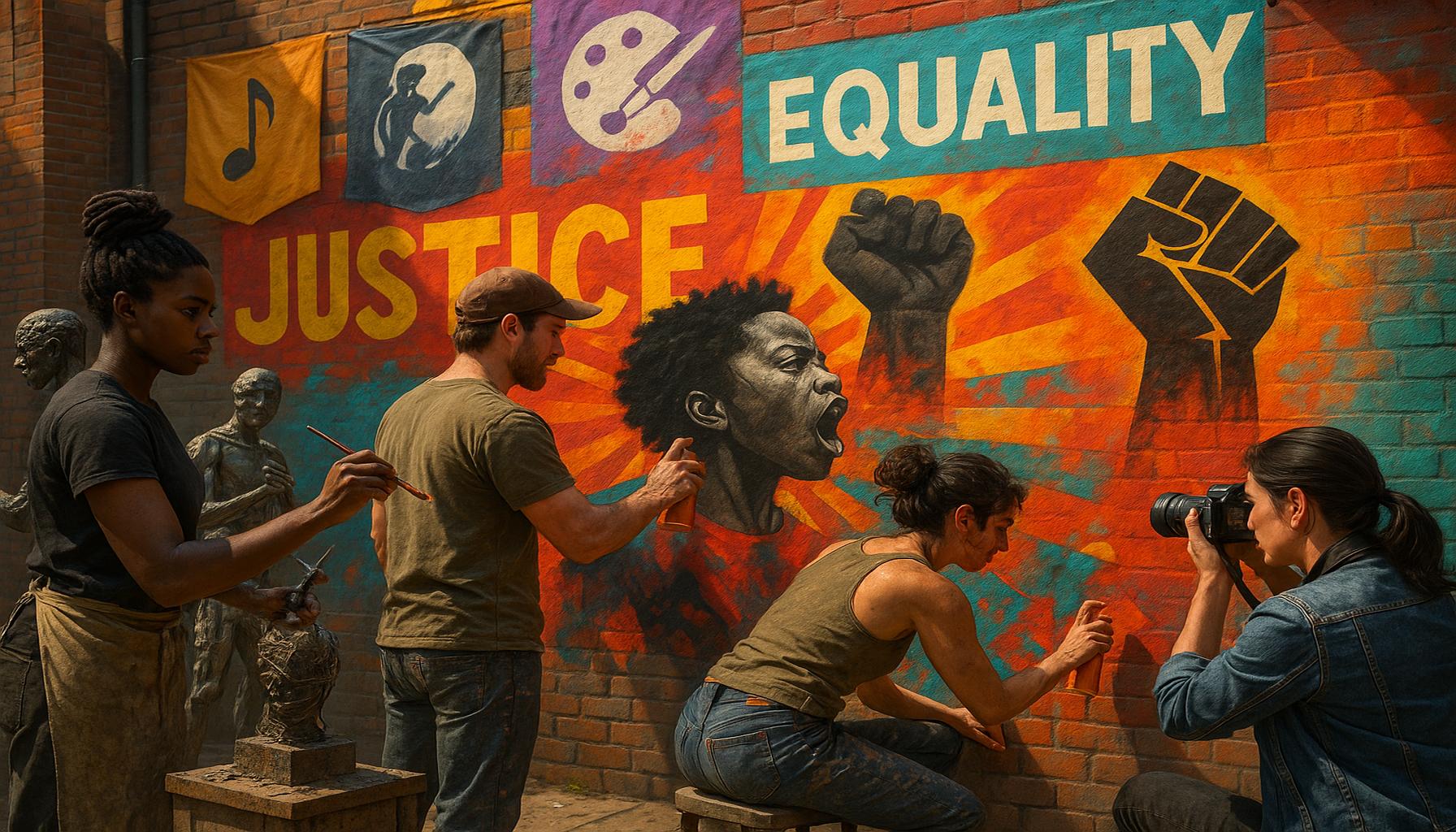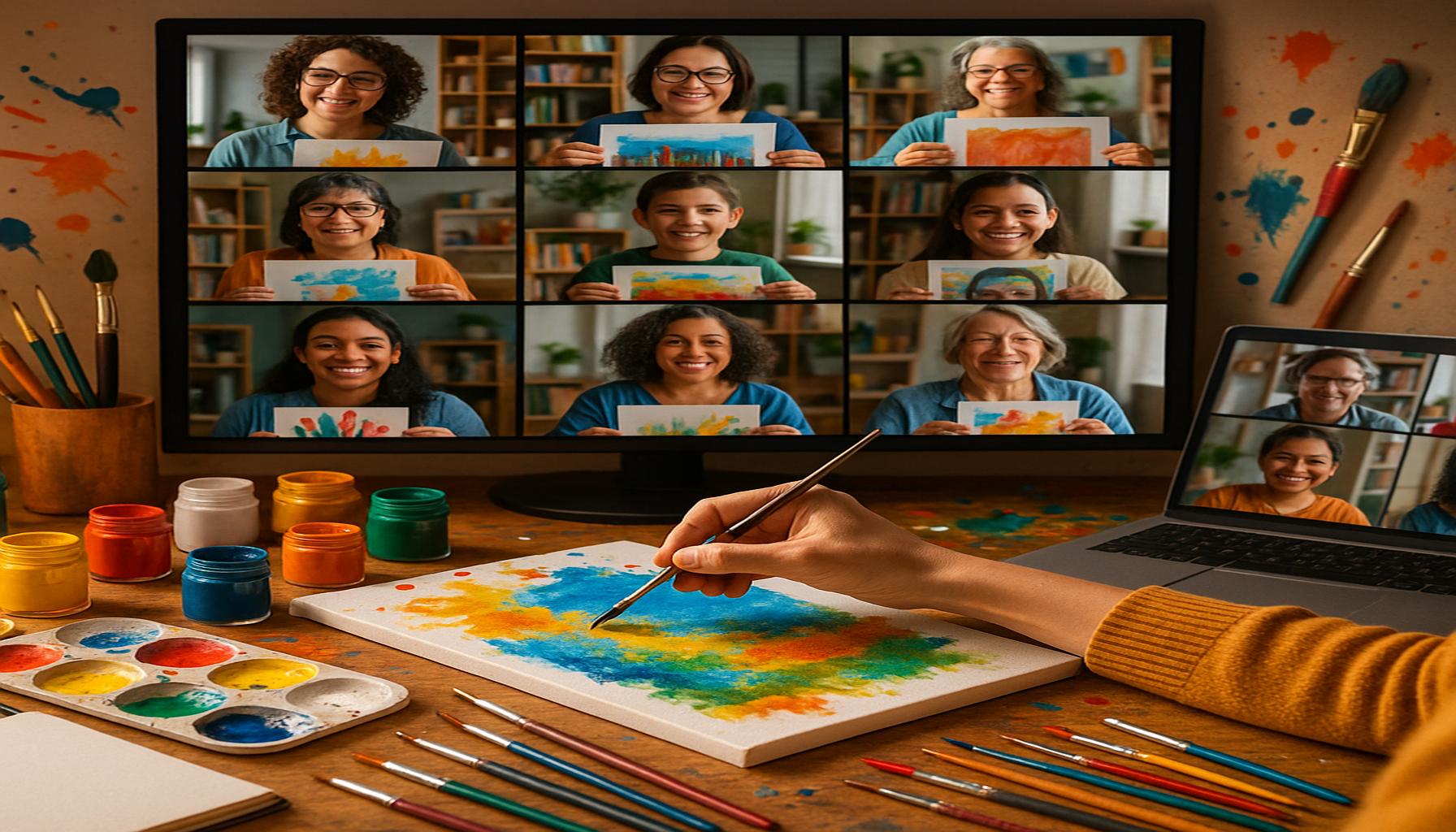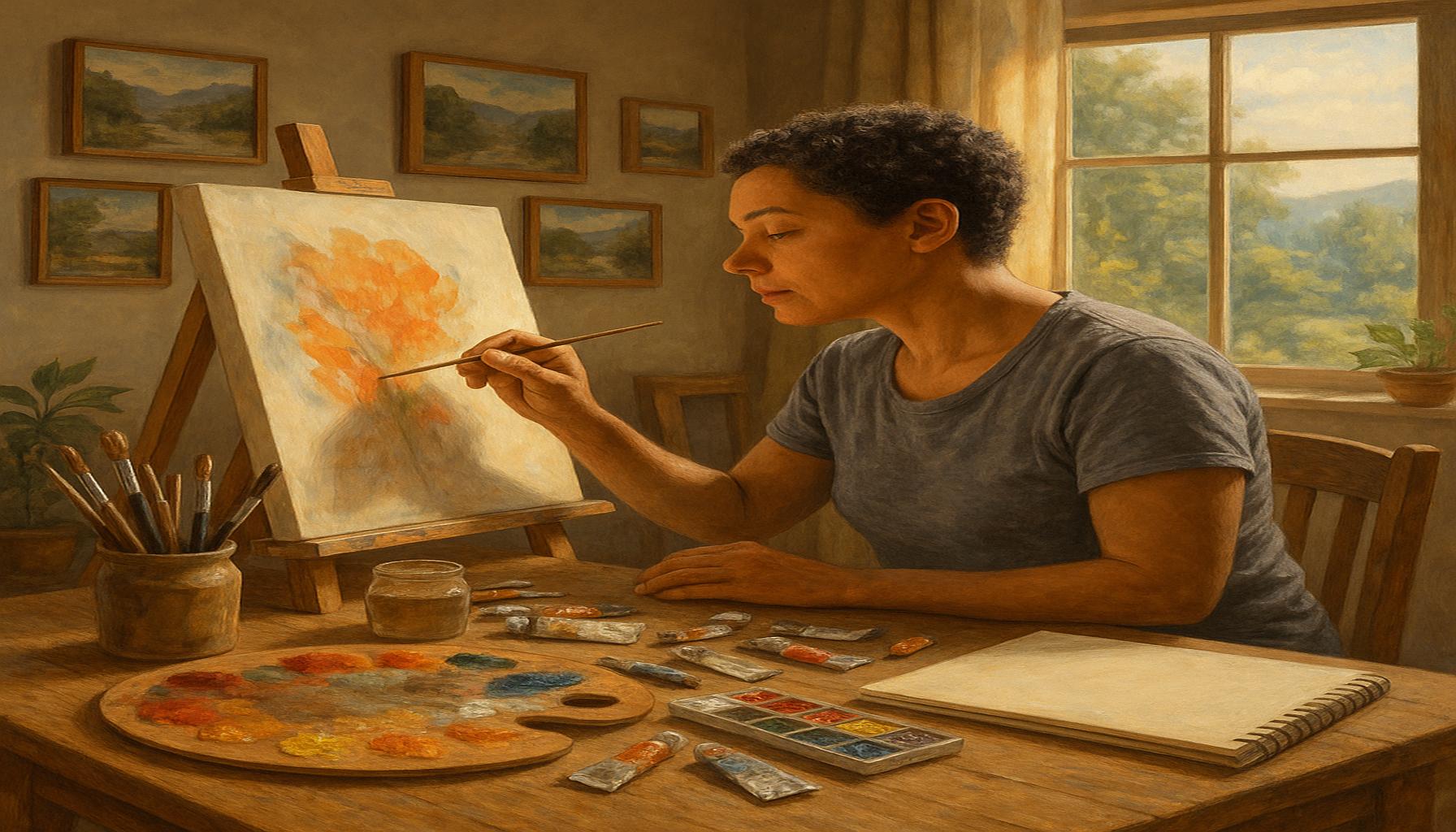The Evolution of Digital Art: How to Create and Monetize Your Works Online
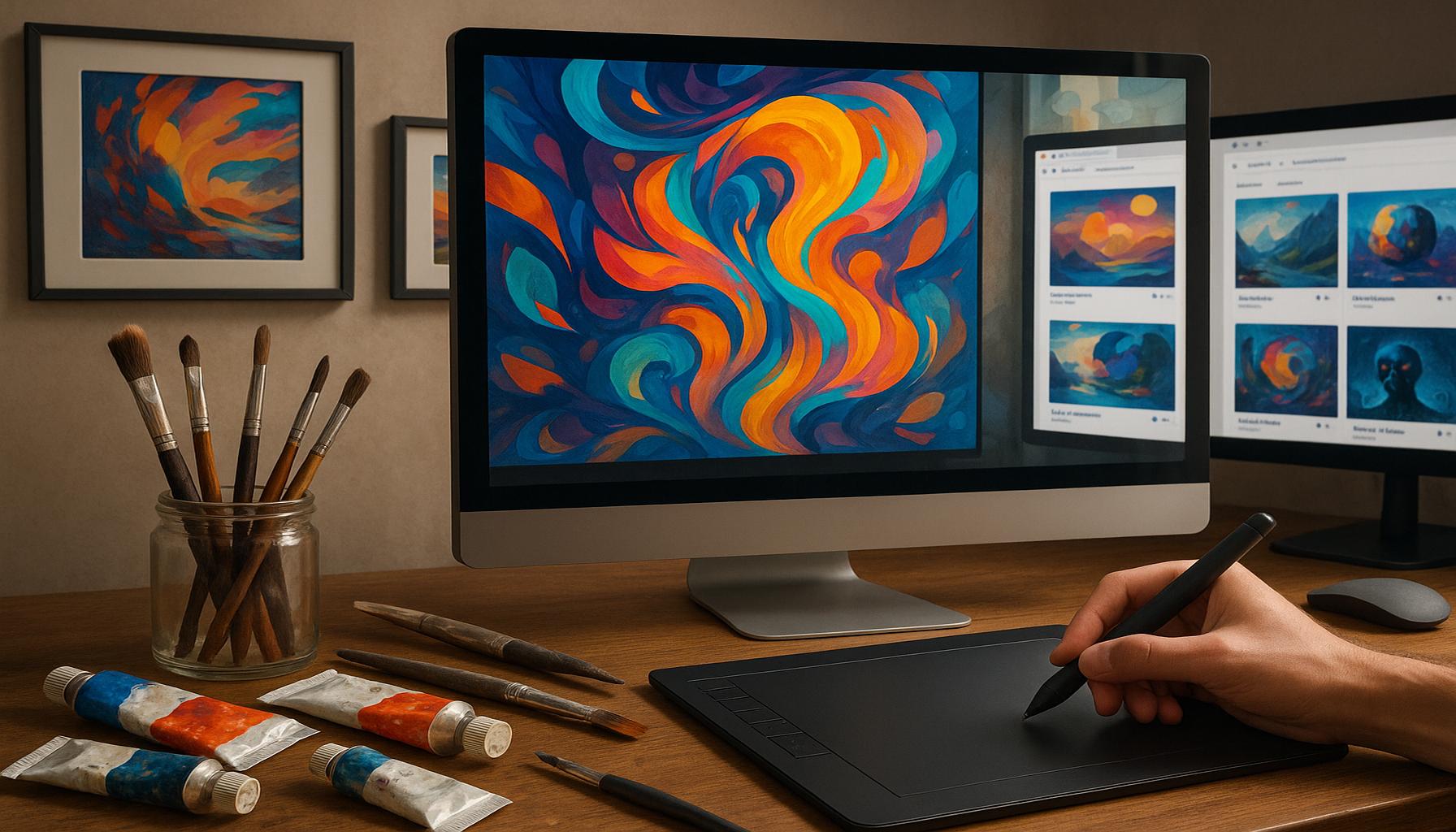
The Evolution of Digital Art
The evolution of digital art is a rich tapestry woven from the threads of technology and human creativity. Artists have redefined what it means to create art in the digital age, breaking down traditional barriers and expanding their audiences exponentially. Digital creativity is limited only by the artist’s imagination, making room for innovation that was once deemed impossible.
Key Milestones in Digital Art
Several pivotal milestones have marked this exciting progression, shaping the landscape of how art is produced and consumed.
- Early CGI (Computer-Generated Imagery): The 1960s saw pioneers like Ivan Sutherland developing early computer graphics. This period birthed experimental digital art, including the first 3D-rendered graphics that set the groundwork for future advancements. Today, CGI is integral not only to art but also to the film and gaming industries, with studios producing photorealistic visuals that transport audiences to fantastical worlds.
- Advancements in Software: The advent of powerful tools like Adobe Photoshop and Illustrator in the late 20th century revolutionized the creative process. These applications provided artists with new capabilities, allowing for intricate designs and enhancements that were previously labor-intensive or impossible. For instance, the layering feature in Photoshop enables artists to manipulate images without permanently altering the original, giving birth to new styles such as digital collage.
- Rise of Social Media: The emergence of platforms like Instagram, Pinterest, and DeviantArt has transformed art sharing into a global phenomenon. Artists can showcase their work to millions, making it easier than ever to gain recognition and connect with other creatives. Viral trends, such as #ArtChallenge, have propelled unknown artists into the limelight, showcasing the democratizing power of social media.
- Introduction of NFTs: Non-fungible tokens (NFTs) have brought a paradigm shift in art ownership and sales. Artists can now tokenize their digital works and sell them on blockchain platforms, ensuring authenticity and scarcity. High-profile examples, such as Beeple’s “Everydays: The First 5000 Days” selling for $69 million, illustrate the financial potential that digital artists can tap into in this evolving marketplace.
Endless Possibilities and Monetization
As the digital art landscape continues to mature, the possibilities for creation are virtually limitless. Artists today can experiment with styles ranging from traditional painting techniques to futuristic virtual reality environments. Additionally, understanding effective methods for monetizing these creative endeavors has become paramount.
In this article, you will find insights on identifying the right tools for digital creation and exploring various revenue streams, including commissions, merchandise, online courses, and digital galleries. Embracing both creativity and entrepreneurial strategies will not only elevate your artistic journey but also ensure its sustainability. As the digital art realm expands, so too will your opportunities to thrive in this exciting field.
DISCOVER MORE: Click here to learn about the psychological benefits of art therapy
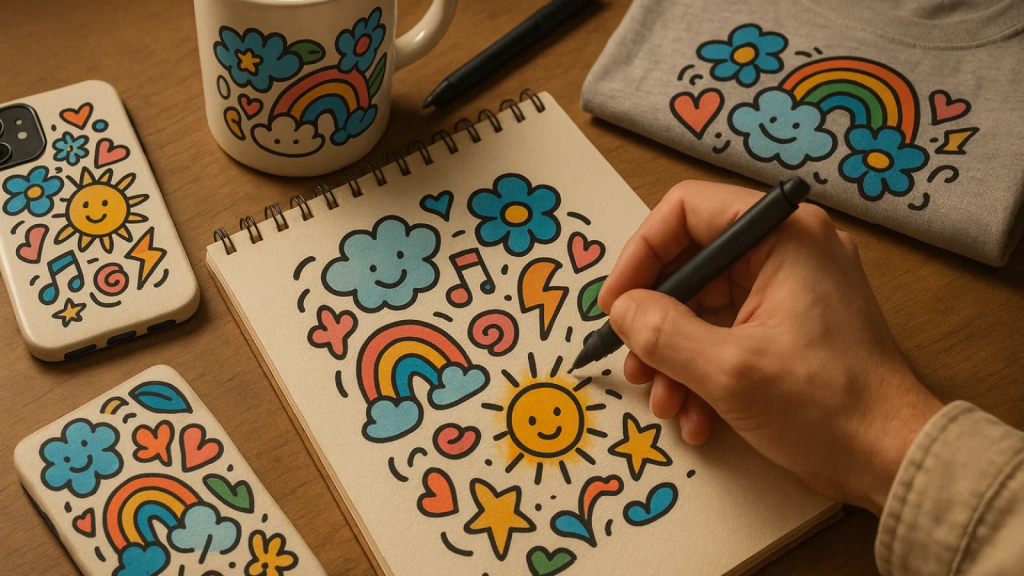
The New Era of Digital Creation
In the fast-paced world of art, the digital landscape is constantly evolving, and today’s artists are reaping the benefits of this transformation. With advancements in technology, artists have access to an array of tools that empower them to express their vision like never before. From graphic design software to digital painting applications, these resources have redefined the possibilities of creativity. Understanding and utilizing these tools is essential for anyone looking to thrive in the digital art world.
Essential Tools for Digital Art Creation
The technological advancements that have propelled digital art into mainstream culture have also made it more accessible. Here are some vital tools that every digital artist should consider:
- Drawing Tablets: Devices like the Wacom Cintiq and iPad Pro have become household names among digital artists. They provide a natural drawing experience, allowing artists to sketch directly onto the screen. These tablets often come with pressure-sensitive styluses, making it easier to replicate traditional brush strokes in a digital format.
- Digital Painting Software: Programs such as Procreate, Corel Painter, and Adobe Fresco are tailored for artists looking to create detailed compositions. Each offers unique features, including brushes that mimic real-life painting techniques, layering options, and advanced editing capabilities.
- Animation Software: For artists interested in motion, tools like Adobe After Effects and Blender provide robust options for creating animations that can be shared across various platforms. These applications facilitate the integration of movement into artworks, enhancing storytelling and engagement.
- 3D Modeling Software: As digital art expands to incorporate three-dimensional elements, programs like Autodesk Maya and ZBrush have become invaluable. These tools allow artists to create intricate 3D models, intersections of physical and digital art, and virtual reality experiences.
Cultivating Your Online Presence
Creating stunning digital art is just the beginning; building a brand and an online presence is crucial for reaching potential buyers and collaborators. To effectively showcase your work, consider the following strategies:
- Portfolio Websites: Establishing a professional portfolio is essential. Platforms such as Behance and ArtStation allow artists to present their work in an organized and aesthetically pleasing manner, attracting potential clients and fans alike.
- Social Media Engagement: The power of social media cannot be overstated. Utilizing platforms like Instagram and TikTok to share progress shots, tutorials, and finished pieces not only builds a following but also fosters community interactions that can lead to growth opportunities.
- Networking with Other Artists: Engaging with fellow creators helps build relationships that can open doors to collaborations and joint projects. Participating in online forums or attending virtual art conferences can also strengthen one’s presence in the digital art community.
By mastering essential tools for digital creation and building a robust online presence, artists position themselves for success in the ever-expanding realm of digital art. The creative potential is vast; the key lies in leveraging these opportunities to bring your artistic vision to life while laying a strong foundation for monetization.
As the world of digital art continues to evolve, artists are presented with a plethora of platforms and tools that empower them to create and monetize their works online. One significant advantage of this evolution is the access to diverse digital tools and software that facilitate creativity and experimentation. Artists can now utilize programs such as Adobe Creative Cloud, Procreate, and online resources like Canva, which allow for seamless creation and design, irrespective of skill level. These tools not only enhance productivity but also inspire new forms of artistry that can captivate audiences.Moreover, the rise of non-fungible tokens (NFTs) has revolutionized the way digital art is bought, sold, and collected. NFTs enable artists to tokenize their digital creations, ensuring originality and ownership in a digital landscape that was previously challenging to navigate. This innovation has opened up new revenue streams, allowing artists to not only sell their works but also benefit financially from future sales through royalties. The interest in NFTs has skyrocketed, leading to a burgeoning market where digital art can achieve prices that rival traditional artworks.As artists explore how to create and monetize their works, social media platforms like Instagram and TikTok serve as invaluable tools for exposure and audience engagement. By sharing their creative processes, finished pieces, and personal stories, artists can build a following that is eager to support their endeavors. Utilizing these platforms for marketing purposes not only showcases the artist’s work but also fosters a community around their brand, enabling direct interactions with potential buyers.Additionally, hosting online workshops and tutorials can provide artists with a way to connect with their audience while generating income. As more individuals seek to learn about digital art, artists who share their knowledge find both personal satisfaction and financial benefit. This dynamic fosters a culture of collaboration and learning within the digital art community, further enhancing the landscape of digital artistry.Ultimately, the digital art space is characterized by its inclusivity and adaptability, allowing a wide range of artists to participate and thrive. With constant advancements in technology and platforms for expression emerging regularly, the future of digital art looks promising. By harnessing these tools and trends, artists are not just observers of the evolution; they are active participants in reshaping the very fabric of the art world.
DISCOVER MORE: Click here for essential tips on nature photography
Monetizing Your Digital Creations
In the burgeoning world of digital art, monetization strategies are just as crucial as the creation process. As artists set out to transform their passion into a sustainable source of income, various platforms and approaches offer opportunities for financial success. Understanding the diverse means of monetizing your work can help ensure that your art not only captivates an audience but also generates profit.
Print and Merchandise Sales
One of the most straightforward ways to monetize your digital art is through print and merchandise sales. Artists can partner with print-on-demand services such as Redbubble, Society6, and Printful, which allow creators to sell everything from prints to apparel featuring their artwork. These platforms handle the production and shipping logistics, letting artists focus on what they do best: creating. Furthermore, high-quality reproductions of digital works can appeal to a broader audience, making them accessible to those who may not be able to afford original pieces.
Digital Marketplaces and NFTs
The rise of non-fungible tokens (NFTs) has introduced an innovative way for digital artists to sell their works. By creating NFTs, artists can establish ownership and authenticity for their digital art, potentially leading to higher sales prices in the virulent online marketplace. Platforms like OpenSea, Rarible, and Foundation have emerged as popular choices for artists looking to venture into the world of blockchain and NFTs. However, artists should approach this new territory with caution, as fluctuating market trends and environmental considerations remain pertinent issues in the NFT space.
Offering Commissions and Freelancing
Another lucrative avenue for digital artists lies in taking on commissions or freelancing. Many businesses and individuals are eager to commission original artwork for branding, marketing, or personal use. Platforms like Fiverr, Upwork, and 99designs present opportunities to connect with clients looking for specific artistic services. Artists can build a portfolio showcasing their unique style and promote their availability for commissioned work, enabling them to diversify their income streams.
Creating Online Courses and Tutorials
As an artist develops their skills and gains experience, many find that sharing their knowledge through online courses and tutorials can also be a profitable venture. Platforms like Skillshare, Udemy, and even YouTube provide avenues for artists to create content that showcases their creative process, tools, and techniques. By offering valuable insights into their artistic journey, artists not only strengthen their brand but also generate revenue while fostering a community of aspiring creators eager to learn from their experiences.
Conclusion of Monetization Strategies
The key to successfully monetizing digital art lies in exploring multiple revenue streams and being adaptable to market trends. With a blend of innovative technologies and traditional selling methods, artists can cultivate thriving careers in the digital landscape. By embracing the myriad of options available—from merchandise to NFTs—artists can transform their digital creations into profitable enterprises, ensuring their artistic journey is as lucrative as it is fulfilling.
DIVE DEEPER: Click here to uncover the benefits of music as therapy
Conclusion: Embracing the Future of Digital Art
The landscape of digital art is constantly evolving, offering ever-expanding avenues for artists to express their creativity and monetize their work. As we’ve explored, the journey from creating captivating pieces to achieving financial success involves a multifaceted approach that integrates technology and innovative marketing strategies. By leveraging platforms for print and merchandise sales, delving into the world of NFTs, or offering commissioned artwork, artists can establish a diverse income stream that aligns with their unique styles and audiences.
Moreover, the importance of sharing knowledge through online courses cannot be understated. Becoming an educator allows artists to connect with aspiring creators while building a community around their craft. As digital platforms continue to democratize art, artists must remain adaptable and responsive to market trends to maximize their growth potential and ensure their creative endeavors flourish.
In conclusion, the evolution of digital art signifies not just a change in medium but a profound shift in how art is created, shared, and valued. Artists are now equipped with tools that enable them to reach global audiences and transform their passion into viable careers. By exploring new methodologies and embracing technological advancements, you can innovate within this dynamic field and turn your artistic vision into a thriving business. Venture forth with an open mind, and discover the vast possibilities that await in the exciting realm of digital art.
